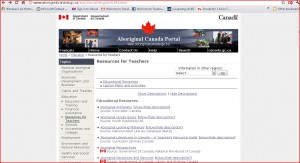Topic : Bridging the gap of culture and education between non-indigenous and Indigenous groups with technology
As a Jamaican working in my country I was never exposed to indigenous people and their cultures in Canada and Australia until I started module one of this course. As I read the literatures of this module, I have become aware that there is a lot to learn about the indigenous cultures and they can learn from our culture. I agree with the quote, “Culture is a deeply ingrained part of the very fiber of our being” (Brown, 2000, p. 183). In my view, culture is unique to a group but should be not enclosed to a particular group. We easily communicate with each other when we are fully aware of each other’s culture. Hence the knowledge of different cultures becomes important to effective and efficient communication between individuals. Through the use of technology one can easily learn the cultures of indigenous people and vice versa.
Since the start of this course my web searches are centred on the cultures and education of indigenous people both in Canada and Australia. From various searches I have done so far revealed that both the indigenous and non-indigenous people can immensely benefit from each other. As result of the high fuel which has greatly affected the price of travelling across countries, technology is most effectively tool to bridge the gap between boundaries.
As I continue to carry web searches for my weblog on each module in this course, I will ensure my searches are based the keywords of my research topic.
Reference:
Brown, H.D. (2000). Principles of Language Teaching and Learning. New York: Pearson Education.

